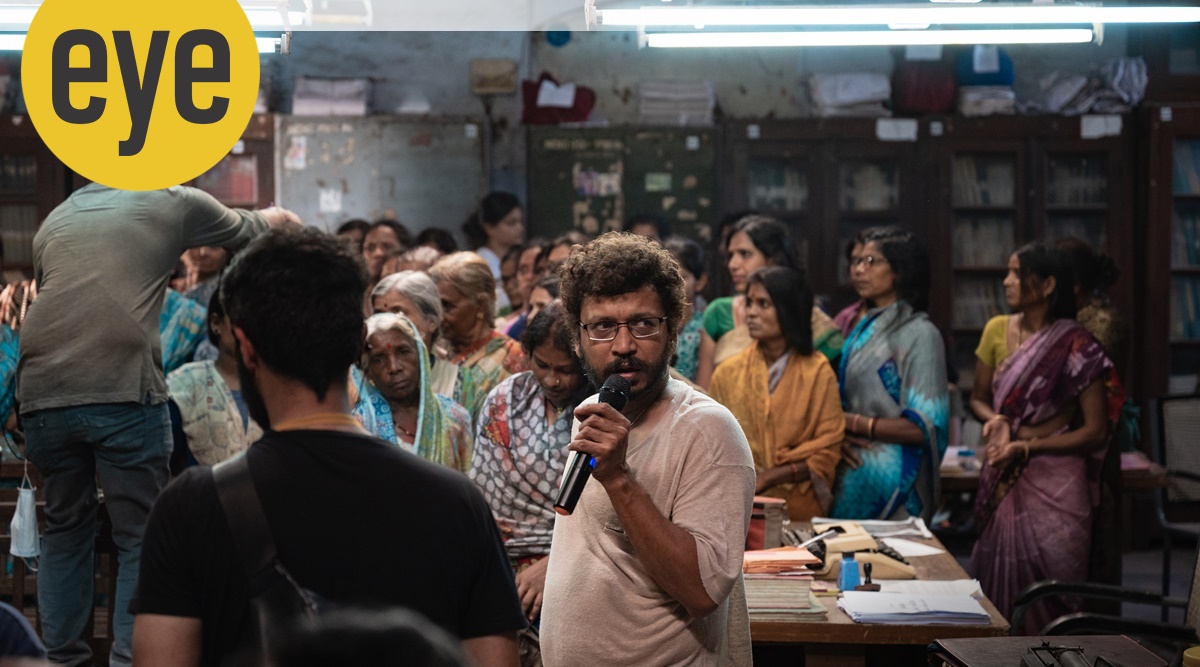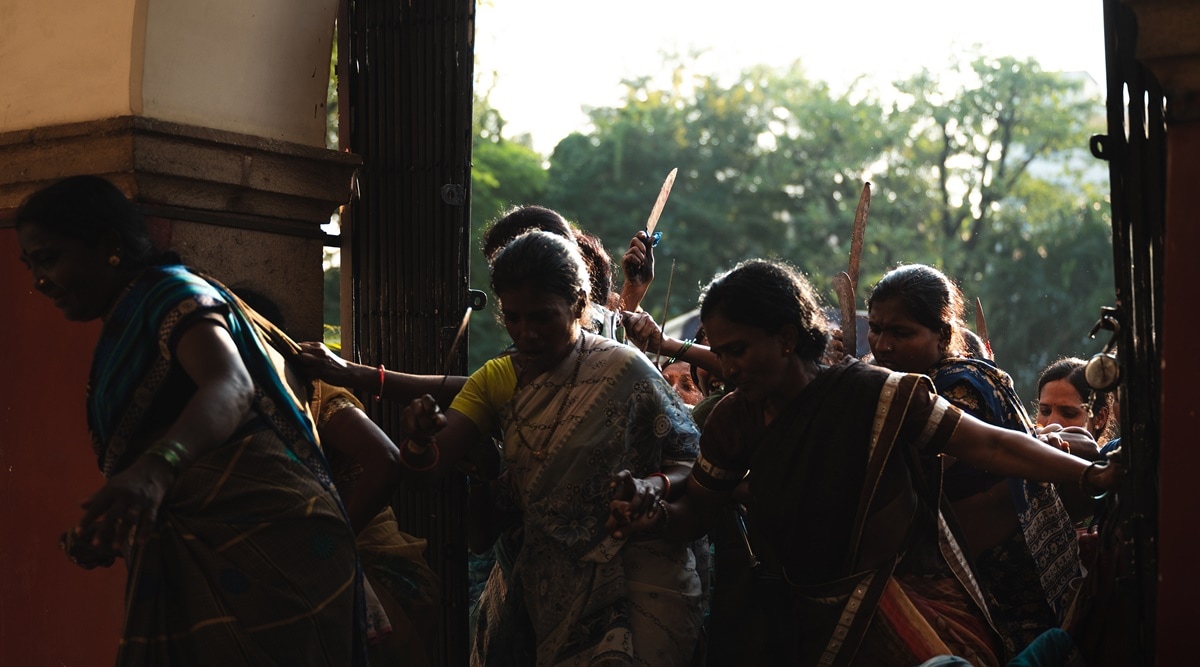 Writer-director Umesh Vinayak Kulkarni
Writer-director Umesh Vinayak KulkarniWriter-director Umesh Vinayak Kulkarni’s gritty docu-drama Murder in a Courtroom is the recent addition to Netflix’s true crime series, Indian Predator. The three-episodes, which released on October 28, recounts the lynching of dreaded criminal Akku Yadav at a Nagpur court on August 13, 2004, by a mob, mainly comprising women of Nagpur’s Kasturba Nagar slum who came armed with chilli powder, knives and stones. Kulkarni puts the spotlight on these plucky women, who unflinchingly share details of Yadav’s criminal activities and the killing. It’s also a story of how the system failed them, even when they were terrorised and assaulted by Yadav for nearly a decade.
The Pune-based filmmaker, who has made movies such as Valu (2008), Vihir (2009), Deool (2011) and Highway (2015), takes us through the choices he made while giving shape to this docu-drama, his meeting with these feisty women and his attempt to evoke emotion through visuals.
Excerpts:
How did you get the women to face the camera and talk about Akku Yadav?
We spent a lot of time with them before we started shooting. Initially, it was tough. They had not spoken to any outsider about the incident before. Barring Usha Narayane (who stood up to Yadav, triggering a chain of events that led to his killing), others had not shared their experiences in public. Obviously, there was also the fear that speaking to us might lead to the reopening of the case. Slowly, we managed to break the wall. Once they were comfortable with us, they opened up.
They sound quite honest and spontaneous.
I had decided not to guide them. During our earlier interactions, I didn’t bring up the incident much. I didn’t want them to repeat on camera what they had told us earlier; it would have sounded staged. It helped that they are good storytellers. They would get philosophical, dramatic and emotional, at times.
The series opens with the woman marching to the court and again in the final episode you revisit the incident of that day in detail. Did you have a structure in mind before the shoot started?
The docu-drama format is not new but streaming video platforms have made it popular. There is a certain magic in interacting with real people. However, we Indians are mostly drawn to fiction. I wanted to make the voices of these women accessible to the fiction-oriented audience. The format came from the need to understand these women and their experiences. That’s why I chose to show their faces (of real women involved with the incident). For the scenes where we recreated the incidents, we decided to cast others in their roles. Usually, such shows only tell what happened. For me, the emotion has to come from the situation and the visuals, and not only from the information.
How much did the format change during the production?
We had prepared a bible with a structure in place. After we shot the interviews, we tweaked it according to what we got and who we spoke with. For instance, we could not speak to anyone for the Yadav community or his family even though we tried a lot. The format did evolve but didn’t move much from the original structure.
In showing the real women of Kasturba Nagar, the setting has been thoughtfully created with proper lighting and art direction.
We had decided that we won’t have different costumes other than what they wear. We chose their costumes from their wardrobe. But how we filmed their interviews evolved during the making process. We didn’t want to shoot in their houses since they were not comfortable talking with other family members present at home. So, we created these set-ups. We also spoke with the experts in similar settings. Otherwise, the women would have appeared to be outsiders. I wanted to bring in a certain design and make them part of the same world.
Some of the most poignant parts of the series are about the woman, who was raped by Yadav, and her husband who stood by her. How did you convince them to share their story?
We had communicated with them only through others until then. It was a surprise for us when she came accompanied by her husband. Even after they arrived, we had no idea what they were going to share. They kept their faces covered. The whole unit was spellbound when they started talking. We could not keep everything that they said but we have kept that as a long sequence.
Any particular thoughts behind opening the first episode with a rap song as women marched to the court?
The details of the case are in the public domain. The narrative that everyone knew is that a group of women, who were angry, went to the court and killed a man. I wanted to put that forward, point blank. Instead of a simple narration, I wanted to give it some form. We used a rap song, which is traditionally a form of rebellion.
How did you get author Jerry Pinto on board for the subtitles?
After the final cut, I thought we should have someone who is not just a translator but understands the beauty of language (the women speak Marathi in Nagpuri dialect). I told him that he should watch it and then decide if he wants to subtitle it; he agreed.
 A still from the film
A still from the film In spite of revisiting a brutal killing, what made you stay away from showing gore on screen?
I wondered how do I depict violence? is in the mind. That’s something I wanted to explore instead of showing gory or stabbing shots. Those can be titillating. I believe that it becomes hyper-real when we show it. While making the series, I wanted to create something that resonates with the audience.
Was helming this series a challenge after making features?
With each project, I have tried to step out of my comfort zone. In Highway, there is no interior shot. The characters are moving and there are no protagonists. Murder in a Courtroom was challenging not just as a subject but also as a form. This is a creative documentary. I wanted to go beyond the genre. That’s why I have not used the syntax of crime dramas. We should be truthful to ourselves and sensibilities while telling stories. We should not do something just to sound politically correct or because something is in vogue.